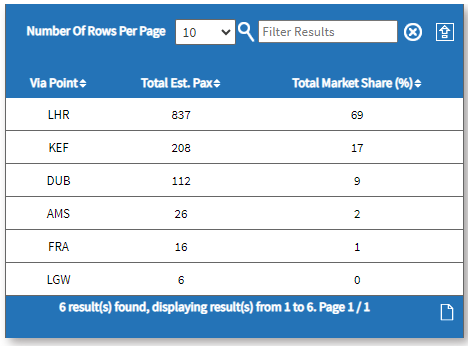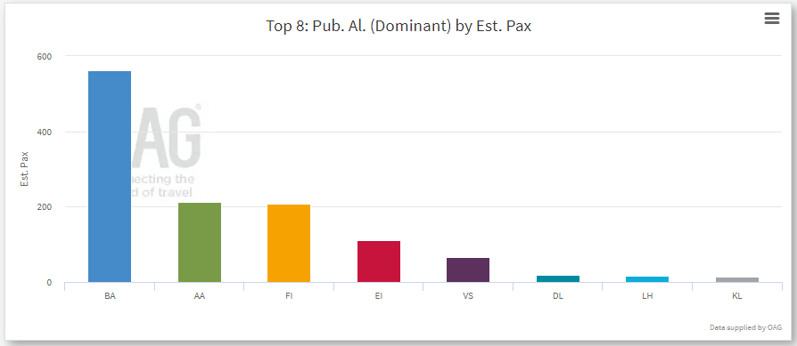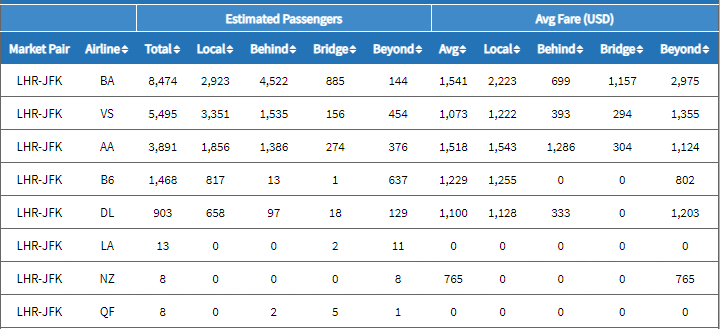‘Mind the traffic!’: a phrase often associated with car journeys, but equally important in the world of aviation - and not in terms of air traffic.
Much attention is paid to airline schedules, times of departures, banks of traffic, connections, and slots, but all of those factors are really driven by one factor: passenger movements. So, what is passenger booking data - commonly referred to as demand or booking data - and how can we interrogate the data to gain insights?
Key Points about passenger booking data covered in this blog
- Passenger Booking Data reveals how, where, and when airline bookings are made, capturing global travel demand and behaviour.
- This data is sourced primarily from Global Distribution Systems (GDSs) and airlines, covering billions in bookings annually and representing the largest sample in the industry.
- Each booking record contains detailed journey, cabin, and booking origin information while maintaining strict data privacy standards.
- Airports, tourism boards, government agencies, and the hospitality sector use Passenger Booking Data to shape network strategies, benchmark performance, and inform infrastructure and marketing decisions.
- The insights derived support network planning, opportunity spotting for new routes, and understanding shifts in travel patterns—making Passenger Booking Data critical for strategic aviation analysis.
What is Passenger Booking Data?
Passenger Booking Data refers to flight bookings, including details of where air passenger traffic originates, connects, and ends - by region and point of sale. The data is sourced from Global Distribution Systems (GDSs) and Airlines around the world. GDSs are used by travel agents to power their reservation systems and connect with the airlines' reservation systems.
Depending on the country, the proportion of bookings made via GDSs can range from 25-60%; as airlines increasingly encourage travelers to book direct via their websites. While the sample size may seem to be ever shrinking, it’s important to remember that the number of bookings included in the OAG database amounts to billions of dollars per annum - so it is probably the largest sample in the world, in any industry, and therefore pretty reliable at that scale.
OAG’s Traffic Analyser tool uses airline booking data to allow users to look at:
- demand,
- flows of traffic,
- the rate at which bookings are made,
- and, importantly, how airlines and airports around the world are building their share of the market.
It is one of the most comprehensive databases of its kind in the world, with data stretching back over ten years.
What Data is Included in Passenger Booking Data?
How is Passenger Booking Data Collected?
Every booking captured is a valuable piece of aviation data., it tells us:
- the routing of the passenger's journey,
- what booking class and cabin they have traveled in,
- where the booking was made,
- the airline they are flying with,
- if they are connecting.
For data protection purposes it does not include the passenger's name or passport details.
At the end of each month, the data from all these bookings is then gathered by each GDS who then, having cleansed, checked and double-checked the data, exchanges that information with other GDSs on a selective basis, allowing each company to build their own global data set. At this point, each GDS has what we describe as an unweighted data set, a very big sample of the total aviation market for one month, but not an estimation of the total. That’s when some very powerful analytics, machine learning and data science step into the process.
Combining data science, referencing multiple travel and immigration data sets, airline reports in the public domain and years of historic experience, the data is then weighted up to an approximation of the true market size; and it is an approximation, it doesn’t perfectly match any other data set. However, experience shows that even airports and airlines can count passengers very differently - so, is a sample, an approximation of the market, really of any use? The answer is absolutely and here are some of the reasons why.
Who Uses Passenger Booking Data?
Airports
Airports utilize Passenger Booking Data to understand airport and route market sizes. The unserved routes report exposes where there is demand for a route not currently in operation from their airport. Airports can use this data for airline attraction and business development.
Tourism Boards
Tourism Boards use Passenger Booking Data to benchmark their destination against nearby competitors by exploring the origins of where people are traveling from and where they are connecting.
 Connecting Airports Glasgow - JFK
Connecting Airports Glasgow - JFK
Government Agencies
Government Agencies use Passenger Booking Data to identify market sizes, monitor passenger flows across countries, review the impact of tourism, and inform new infrastructure decisions.
Hospitality
In the Hospitality sector, the seasonality patterns of visitors (as well as where they are traveling from for targeted advertising) are informed by analyzing Passenger Booking Data.
Why is it Important?
Firstly, Traffic Data is the largest, most comprehensive flight data set in the industry. It might not be perfect, but the sample size gives an unrivaled snapshot of what’s happening in the world of aviation. It helps with:
- Tracking network and demand development
- Benchmarking airport and airline performance
- Highlighting connecting traffic flows
- Identifying growth opportunities and falling demand
- Supporting forecasting and route planning
For any serious competitor in the market, it is the second most important data set (after airline schedules) as it allows them to track how airline networks and demand patterns are developing, how competing airports are performing, and what type of connecting traffic flows through those airports. It provides valuable insights on forward booking patterns, the potential to spot opportunities for capacity growth in markets, and it can also highlight demand falling away as travel patterns change.
 Top 8 Published Airlines for Glasgow - JFK
Top 8 Published Airlines for Glasgow - JFK
Passenger Booking Data allows us to forecast the impact of a change in the market by looking back and seeing how behavior or demand changed when a similar action occurred last time - and yes, history confirms that what happened last time is likely to happen again.
Perhaps most importantly for airports and airlines, it highlights opportunities for new routes by showing us how travelers are currently indirectly routing, or where perhaps more capacity is needed to accommodate that indirect demand. All of which makes Passenger Booking Data a must-have part of any travel analyst's tool set.

Example of Traffic Data for London Heathrow - JFK Airport
And for those that argue that the samples are always just that, samples, remember that sometimes the relativity, the change of structure, the power of algorithms and machine learning, and the impact of something happening are as important as the precise numbers. So, next time you are deep in aviation analytical thinking, remember to mind the traffic!
Passenger Booking Data | Discover Now
More Insider Guides:





